
Where We Be
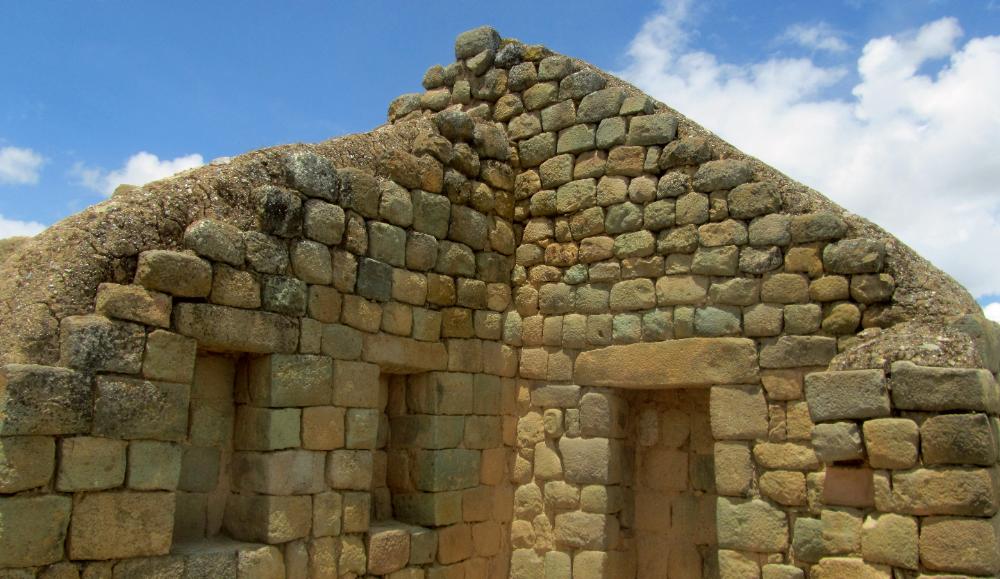
| Ingapirca, Ecuador |
| The Incas conquered the original Cañari settlement around 1500 -- before they were conquered themselves by the conquistadors around 1530 |
Ingapirca is the best preserved and largest
Incan archaeological site in Ecuador, dating
from the 15th century. The Incas took over the
original Cañari settlement around 1500. They
built the central Temple of the Sun using their
"patented" no-mortar construction techniques
and remained at the site for about 30 years
before abandoning it around the time of the
conquistadors. It served as the northernmost
outpost of Incan dominion.
Ingapirca ("Inca Wall" in Quechuan) brought
back fond memories for us of our Inca trek in
Peru. We could tell straight off the temple was
of Incan construction with its seamless curved
stone walls and trapezoidal doors and niches.
Of course everything about Ingapirca is smaller
than the awe-inspiring Machu Picchu, but we
still thought it was worth seeing. It's two hours
from Cuenca by bus and makes a good day trip.
Incan archaeological site in Ecuador, dating
from the 15th century. The Incas took over the
original Cañari settlement around 1500. They
built the central Temple of the Sun using their
"patented" no-mortar construction techniques
and remained at the site for about 30 years
before abandoning it around the time of the
conquistadors. It served as the northernmost
outpost of Incan dominion.
Ingapirca ("Inca Wall" in Quechuan) brought
back fond memories for us of our Inca trek in
Peru. We could tell straight off the temple was
of Incan construction with its seamless curved
stone walls and trapezoidal doors and niches.
Of course everything about Ingapirca is smaller
than the awe-inspiring Machu Picchu, but we
still thought it was worth seeing. It's two hours
from Cuenca by bus and makes a good day trip.
| The low walls in the foreground are of Cañari construction and are less tight-fitting than the Inca walls of the Temple of the Sun |
| No Incan ruins would be complete without a few llamas on site |
| Here you can see the distinctive "pillowy" Incan stones |
| After 500 years the mortarless Incan walls are still standing strong |
| Trapezoidal doors and niches -- with large stone lintels at the top -- are another sign of Incan construction |
| Robin stands in the trapezoidal entrance to the Temple of the Sun. The stones (from a quarry a kilometer away) have a greenish tinge to them. |
| Ingapirca is small compared to the wonders of Machu Picchu but is still worth seeing |
| The Incan temple virgins lived inside this stone structure |
| The stone circles indicate where the Cañari stored their grain in silos |
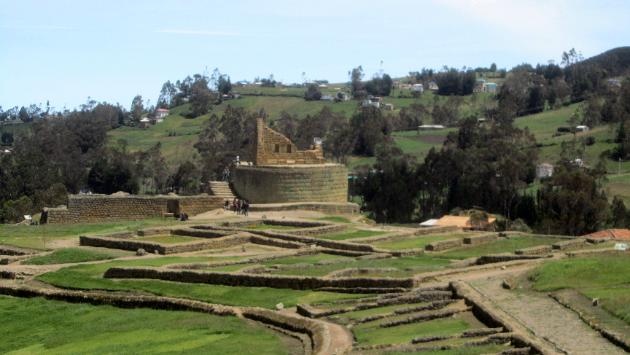
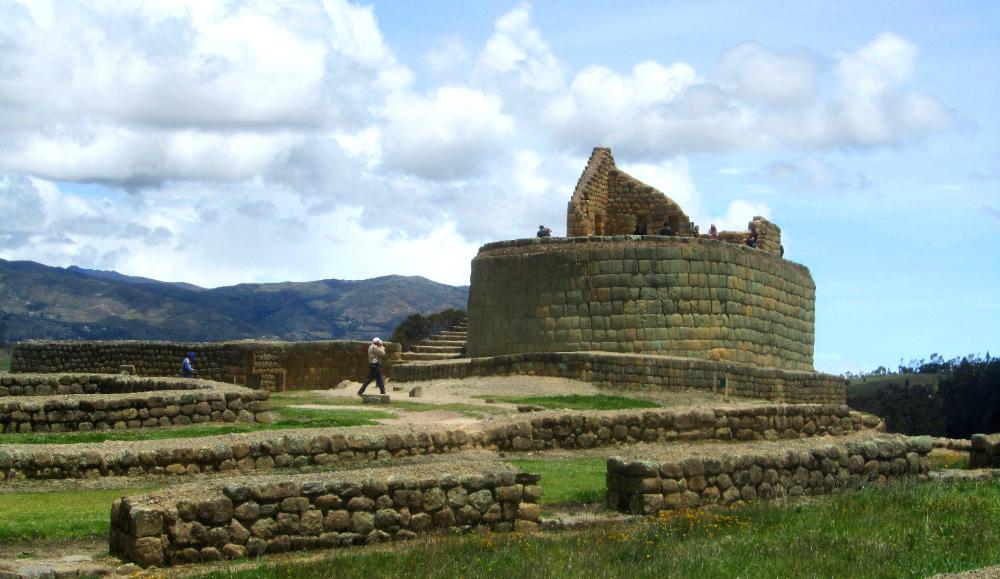
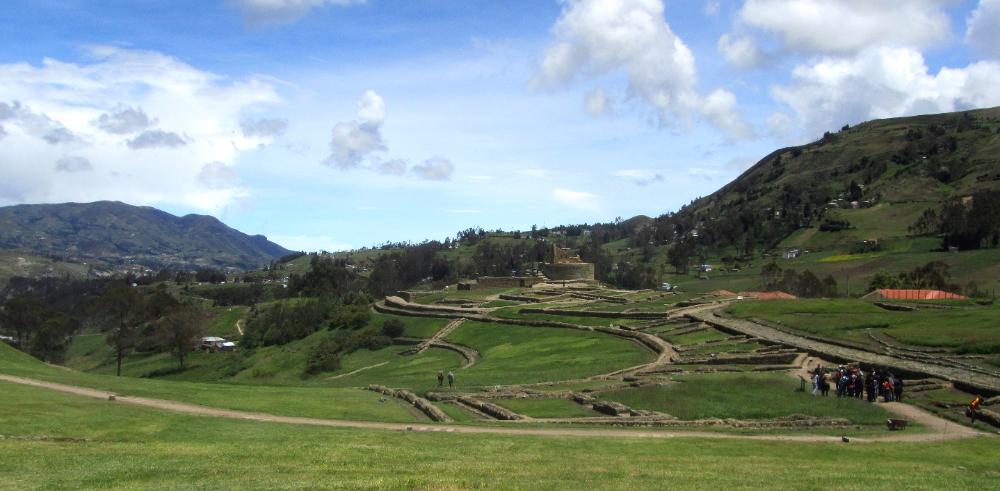
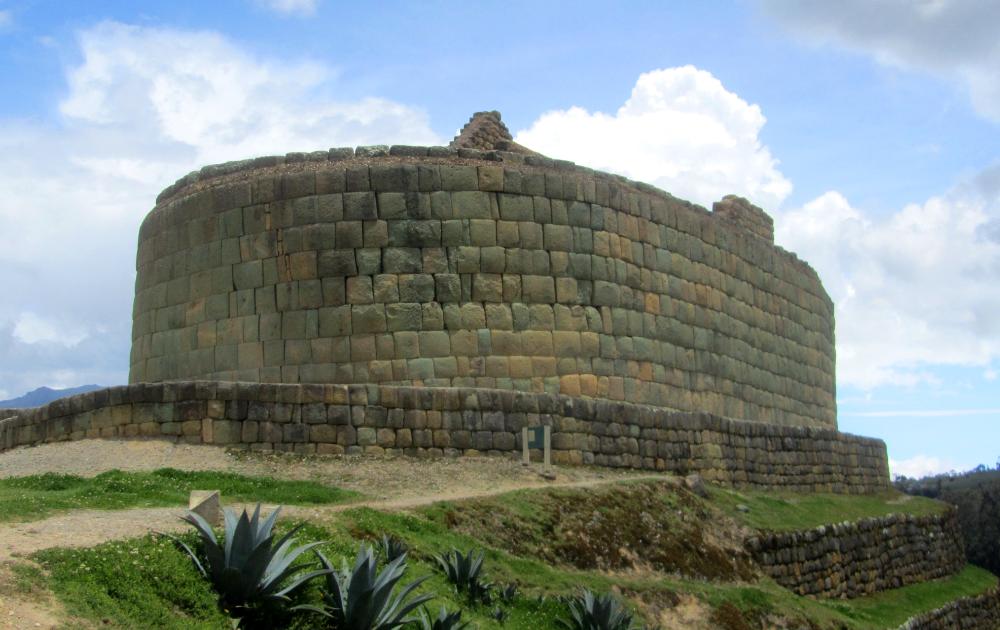
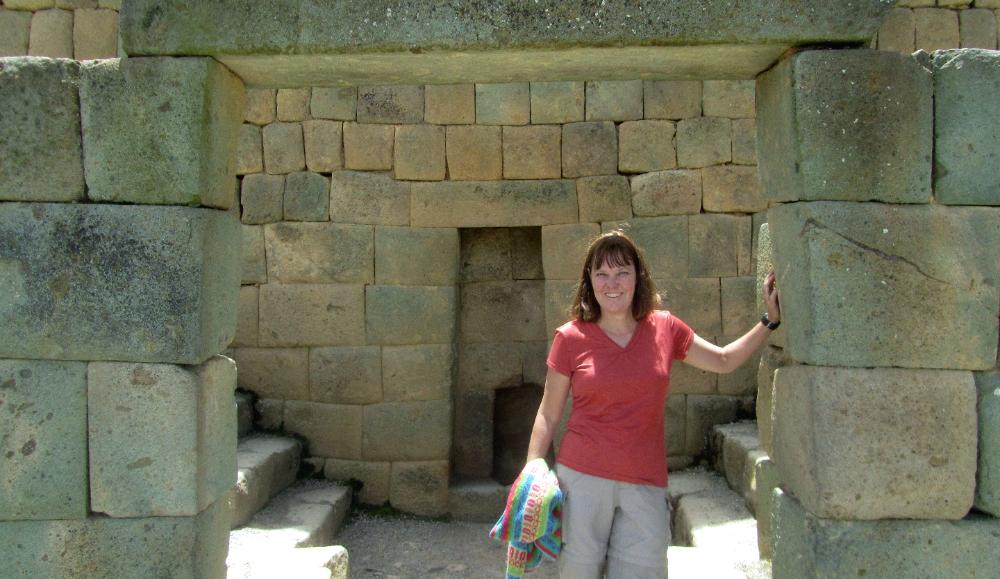
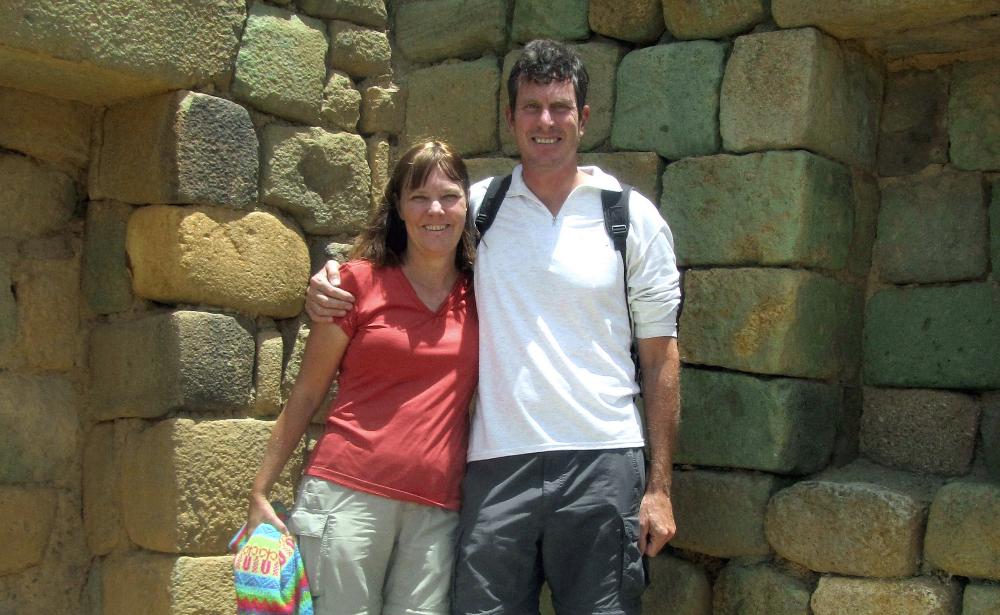
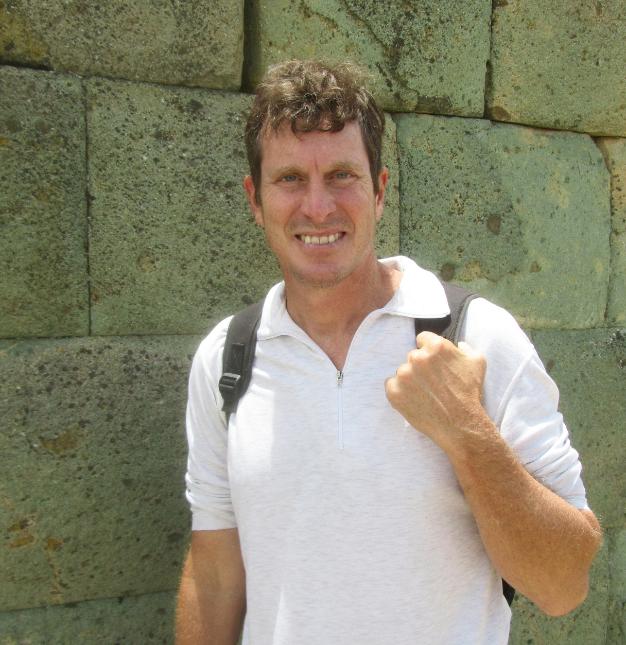
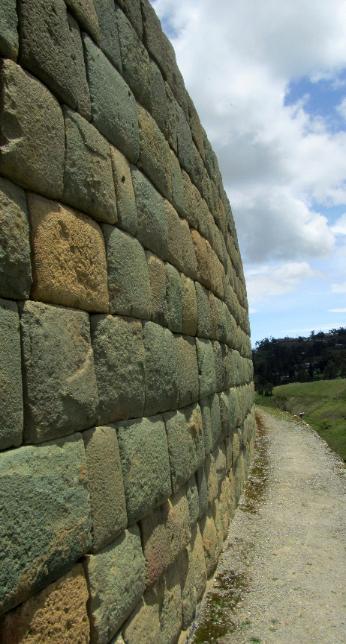
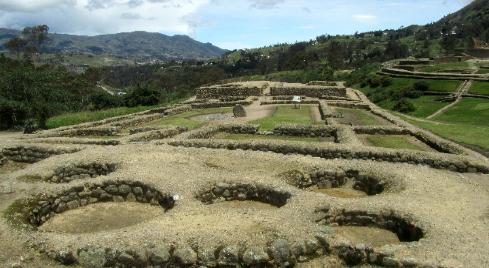
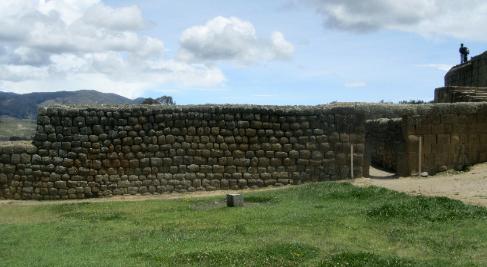


| Notice how seamlessly the mortarless stones fit together |
| Ingapirca's Temple of the Sun is the best-preserved Incan ruin in Ecuador |